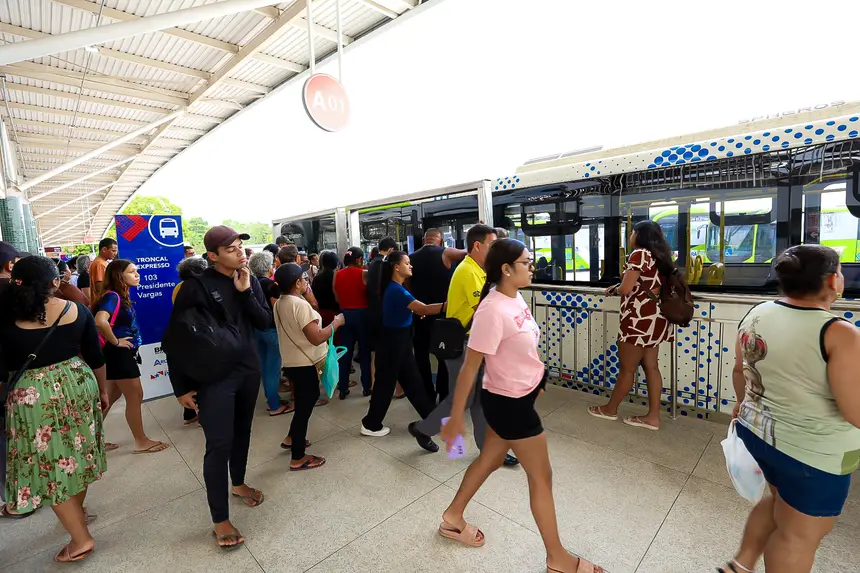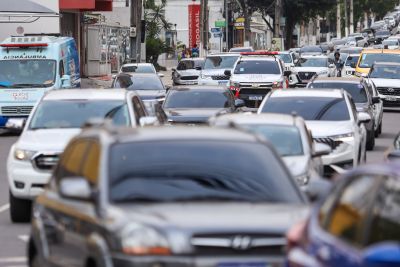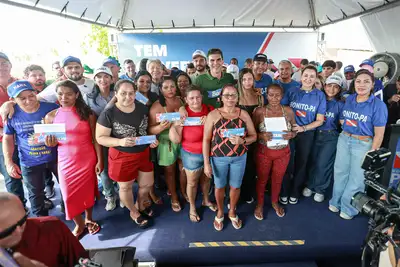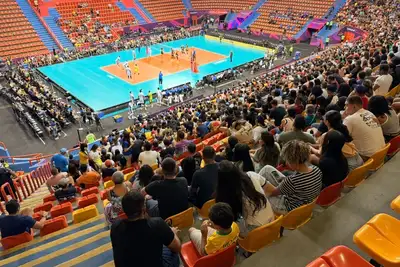On the first Sunday of operation, BRT Metropolitano ensures free, fast, and safe mobility
The assisted operation of the transport system began on Saturday (1st). On this Sunday (2nd), a holiday commemorating All Souls' Day, passengers were able to travel on comfortable buses without fare charges.

The BRT Metropolitano, on its first Sunday of assisted operation with free service, one of the differentiators of the new system, serves the population on a date of strong emotional appeal: All Souls' Day - November 2. Since the early hours, the terminals in the municipalities of Marituba and Ananindeua recorded a high flow of passengers who took advantage of the free transport for trips to cemeteries, family gatherings, and leisure activities.

"Every year I come here on All Souls' Day. I used to wake up very early because of the bus. Since I arrived in São Brás, the bus arrived, stopped for us, with air conditioning. We arrived at this Station (Marituba), they served us very well. I found it perfect,” said vendor Patrícia Rocha, who every year on this date leaves downtown Belém and goes to Marituba to visit a relative's grave.
Started on Saturday, the assisted operation period of the BRT Metropolitano occurs gradually. In this phase, the circulation goes from the terminals of Marituba to São Brás, with integration and a single fare of R$ 4.60 (R$ 2.30 for students) on weekdays, allowing passengers to use different lines by paying only one fare. On Sundays and holidays, transport is free.
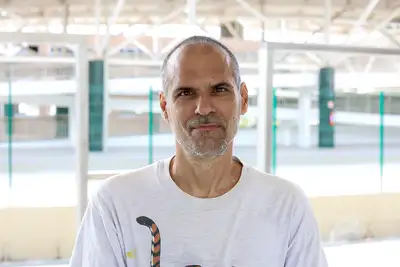
Clóvis Andrade took advantage of the free Sunday to use the New BRT Metropolitano with his family. He wanted to experience the system so that on Monday, he could reach his final destination with more comfort and speed. “I’m learning, but it seems to be very good. It’s great!” he stated.
Boarding - The feeder buses (in blue) serve the neighborhoods and take passengers to the terminals of Ananindeua and Marituba, where passengers transfer at no additional cost to the trunk lines: in lilac (departing from Marituba) and green (departing from Ananindeua). The trunk lines operate in express or stopping mode, with strategic points such as São Brás, Ver-o-Peso, and UFPA (Federal University of Pará).

Jaqueline Silva went to Belém to visit a relative's grave. She mentioned that last year it took a long time to make the trip. With the new BRT, there was no such problem. “Very fast today. The drivers were very polite, and we were well informed about where to get off and where we would pass. We were well received on the bus,” she added.
Structure and sustainability - The BRT Metropolitano will have 265 buses, 40 electric and 225 Euro 6, which can emit up to 15 times less greenhouse gases. When the network is fully implemented, there will be 26 feeder lines and 10 trunk lines, expanding coverage and regularity.
The system will operate with digital ticketing, through the Pra Já Card and app. The card can be purchased via Pix, in the "Pra Já Metropolitano" App.
With the implementation, the expectation is to carry out about 3.8 million monthly transactions, in addition to generating 150 direct jobs in ticketing and 419 validators, distributed across 265 buses, 32 stations, and two terminals.
The “Pra Já” is exclusive to the BRT Metropolitano, without integration with the card currently used in the transport of the Metropolitan Region of Belém. With the card and integration, long routes can be made with just one fare. For example, a passenger leaving Castanhal towards UFPA will pay only one fare. Previously, traveling nearly 80 kilometers could cost around R$ 14.00. For students, the journey will be completed for only R$ 2.30.
The entire operation is monitored in real-time by the Operational Control Center (CCO), with teams from Arcon (Regulatory and Control Agency for Public Services of Pará), Detran (Department of Transit), Military Police, and concessionaires. Continuous monitoring reinforces safety, punctuality, and service quality.

Project - Executed by the Metropolitan Transport Management Center (NGTM), of the Government of Pará, the BRT Metropolitano is a milestone for over 700,000 people, directly connecting Belém, Ananindeua, and Marituba, and integrating the municipalities of Benevides, Santa Bárbara do Pará, Santa Izabel do Pará, and Castanhal, with more comfort, safety, and speed.
The corridor has 21.6 km (10.8 km each way) between Entroncamento and Marituba, with three flexible pavement lanes each way for general traffic and one exclusive concrete lane each way for BRT buses. The operation creates about 850 direct jobs and over a thousand indirect jobs.


